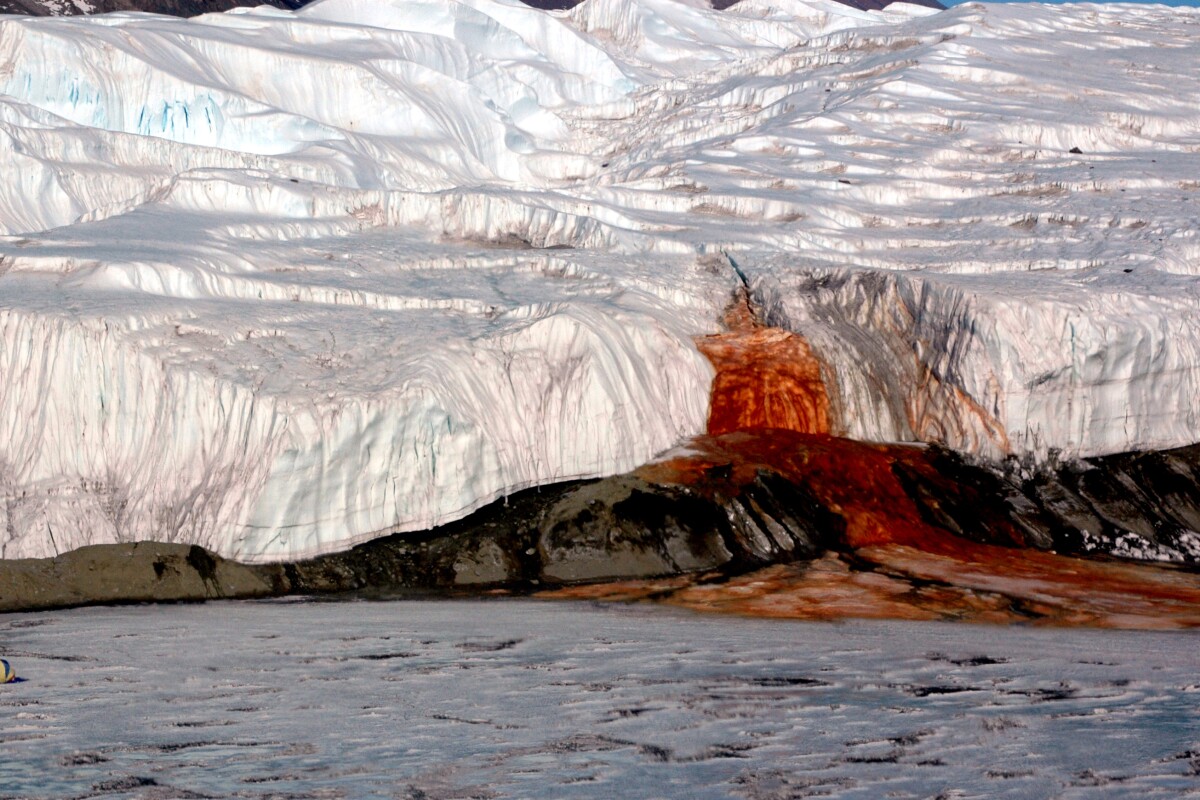I do suspect that we are all idiots. All garbage needs to be handled as a matter of course. Even throw aways need to be gathered and collected.
The next step is to run it all through a robust shredder able to take down steel. This produces a likely wet but shredded feedstock. That is now easy to work with. we can even air dry it all.
Then process with a double lung incinerator at least. The first stage takes the feed stock to the temperature of 600 C and no more. all volatiles are cast off into the exhaust stream and all carbon based material breaks down into those volatiles and pure carbon which burns up.
The second stage has added propane and a high temperature kiln which take thetemperature up to 2000 degrees or hot enough to consume the volatiles. what is left is CO2 and nothing else. Truth is that most feedstocks ( wood and food ) do not need the second stage although plastic may not be so simple.
The flue gas can then be sent through a wet spray to collapse the heat and flue ash.
And here we are a century later and still talking stupid while safely burning coal which is our worst feed stock way better than ever..
Finally, a solution to plastic pollution that’s not just recycling
Countries are negotiating a new global treaty to drastically reduce the plastic waste that has been poisoning the world.
Israel Sebastian/Getty Images
Benji Jones is a senior environmental reporter at Vox, covering biodiversity loss and climate change. Before joining Vox, he was a senior energy reporter at Insider. Benji previously worked as a wildlife researcher.
https://www.vox.com/down-to-earth/2023/6/7/23743640/plastic-pollution-un-treaty-oceans-waste?ref=refind
Plastic recycling doesn’t work, no matter how diligently you wash out your peanut butter container. Only about 15 percent of plastic waste is collected for recycling worldwide, and of that, about half ends up discarded. That means just 9 percent of plastic waste is recycled.
A man walks on a plastic-covered shore in Mumbai, India, on May 31. Bhushan Koyande/Hindustan Times via Getty Images
It’s hard to imagine meaningful solutions to a problem of such epic proportions. Campaigns to ban things like plastic straws almost seem like a joke when compared to the staggering amounts of waste produced by everything else we use — including the plastic cups those straws go in.
Now, however, there might actually be a reason to feel hopeful. Late last year, world leaders, scientists, and advocates started working on a global, legally binding treaty under the United Nations to end plastic waste. The second round of negotiations concluded last week in Paris with a plan to produce an initial draft of the deal.
This treaty could be huge. Although it will take months of negotiating for any of the details to become clear, the agreement — set to be finalized by the end of 2024 — will require countries to do far more than just fix their recycling systems. Negotiators will discuss a menu of options including a cap on overall plastic production, bans on certain materials and products including many single-use plastics, and incentives to grow an industry around reusable items. This treaty could literally transform entire chunks of the global economy.
As with any global deal, an ambitious agreement will face several roadblocks, some of which have already appeared. Certain countries, such as Saudi Arabia and the US, for example, are pushing for voluntary terms that would allow them to continue investing in their petrochemical industries (plastic is a petrochemical).
Then again, the fact that global talks are happening at all is in itself a big deal and reveals a shift in the politics around waste. “There’s a true willingness to tackle this problem,” said Erin Simon, vice president and head of plastic waste at the World Wildlife Fund, a large environmental group. “We’ve never seen so much progress.”
Here’s what a global plastic treaty could do, and why anti-waste advocates are so hopeful.
A worker at a PVC pipe factory in China’s Sichuan Province on November 30, 2022. Lan Zitao/VCG via Getty Images
The plastic treaty will target the root of the problem
Even if recycling weren't such a failure, it wouldn’t put an end to plastic waste. Many items can’t be — or are not meant to be — recycled.
There’s no real way to fix the plastic problem without simply producing less of it, said Nicky Davies, executive director of the Plastic Solutions Fund, a group that funds projects to end plastic pollution. “The first thing we need to do is turn off the tap,” Davies said.
That’s why this treaty is so significant: By conception, the agreement is meant to focus on the design and production of plastics, not just on what happens to plastic items after we use them. In other words, the treaty targets the full life cycle of plastics.
What does that mean in practice? The agreement could, for example, include an overall cap on plastic. This would be a global target for reducing the production of new, virgin plastic (which has no recycled content).
Such a target could mandate that, by a certain year, total annual plastic production cannot exceed the amount of plastic produced in some baseline year. It’d be kind of like targets to slash fossil fuel production in order to curb climate change — but for plastic polymers.
Bye-bye plastic takeout containers, probably
Regardless of whether or not the treaty includes an explicit limit on plastic production, it will almost certainly contain bans or restrictions on some materials.
Certain chemicals used in plastics are especially problematic and could be targeted by bans. Some flame retardants, for example, are linked to cancers and endocrine disruption; they can also make plastics hard to recycle. A number of other additives and materials are similarly dangerous to humans or ecosystems, or they make recycling difficult, such as polyvinyl chloride (PVC) and various kinds of PFAS (the so-called forever chemicals).
The treaty may also ban or restrict a whole bunch of common, problematic products — namely, packaging and other single-use items, such as cups and cutlery.
These are an enormous part of the plastic problem, said Carroll Muffett, president and CEO of the Center for International Environmental Law, an environmental advocacy group. Roughly 40 percent of all plastic waste comes from packaging alone, and nearly two-thirds of it is from plastics that have a lifespan of fewer than five years, according to the Organisation for Economic Co-operation and Development.
“These are materials that come into people’s lives that are often unnoticed, and they have useful lives measured in minutes or moments or at best months,” Muffett told Vox.
A biker in Neihuang, China, carries balloons to sell during a bout of heavy smog. Getty Images
The most immediate bans or restrictions on single-use plastics, researchers say, should apply to products that are most likely to leak into the environment and cause harm and yet are relatively unnecessary. These include takeaway containers, chip bags, balloons, cotton swabs, disposable e-cigarettes, and tea bags. (A number of environmental organizations including WWF have lists of products that the treaty should prioritize.)
Speaking of unnecessary: The treaty may also restrict the use of certain microplastics. These are plastic pieces that are under 5 millimeters in length, which are either deliberately put in some products like face wash or are emitted unintentionally by things like car tires and clothing. Scientists have found them everywhere they look including in our blood and lungs, water bottles, and Antarctic snow.
Restricting these sorts of plastics isn’t a far-fetched idea. Several US states already ban some plastic bags, including New York and California. The US, Canada, the UK, and other countries, meanwhile, prohibit companies from selling shower gels and many other personal care products with plastic “microbeads” in them. And the EU — home to some of the world’s strictest plastic regulations — prohibits a wide number of single-use items from entering the market, including plastic cutlery and straws.
Yet these bans are not global, they’re not always enforced, and they don’t go far enough, experts say. That’s where the treaty could help.
Building out the “reuse economy”
Plastic is widespread for a few obvious reasons. It’s lightweight, durable, and easily shaped, making it useful for a large number of applications. Plastic is also incredibly cheap (even if government subsidies help offset some of the costs).
Should countries try to phase out single-use plastics, whether by a treaty or not, a key question is: What will replace them? In some cases, other materials like paper might be appropriate, although, of course, they can produce waste as well.
A more sustainable solution, Davies said, is to build out what she calls the reuse economy: a system in which many single-use items, like plastic cups, are replaced by containers that are used over and over again.
This model offers clear value where consumers buy and eat food in the same place, such as food courts, movie theaters, or music festivals. In a reuse economy, vendors would give customers a reusable cup, which they would then place in a bin before leaving the venue, not unlike how you return trays at some food courts. There’d be central facilities on site to clean the cups and make them available to the next customer. (That means dishwashing would have to become more widespread.)
A drain in Miami Beach, Florida, clogged with plastic waste. Jeffrey Greenberg/Universal Images Group via Getty Images
Transforming some other parts of the economy is more challenging, including the food delivery industry. Consider, however, that restaurants often use the same kinds of plastic food containers across large cities like New York. Imagine if those containers were meant to be truly reusable; instead of throwing them out or recycling them, consumers could return them (via some kind of bin, for example) to a central system that cleans the containers and restocks them at restaurants.
Obviously, this would require major investments in infrastructure by governments, private funders, and companies — not to mention some changes in behavior among consumers — but there are plenty of examples of these sorts of reuse systems already working successfully. They’ve been around for decades. In Europe and parts of Africa, Asia, and Latin America, restaurants and other retailers commonly sell beer and soda in refillable glass containers. Customers will typically get a small deposit back when they return those items. (An organization called Upstream maintains a list of reuse policies in the US and abroad.)
The treaty could help fuel this approach by mandating global targets related to reusing containers, some of which already exist at a country level (in France and elsewhere). For example, it could set a minimum percentage of drinks that must be sold in reusable containers. The treaty could also help set standards for what a good reusable system looks like and define what “reuse” actually means — considering that many plastic bags and other disposable items say they’re “reusable” even though most of us throw them out.
Davies says the reuse economy is essential to fixing the plastic problem — as essential as renewable energy is for curbing climate change. “We actually need to build the reuse economy in the same way as we have built the renewable energy economy,” Davies said.
Better recycling will help, but it’s only a small part of the solution
The treaty won’t spell the end of recycling. Plenty of plastics aren’t easily cleaned or reused by other people, such as toothbrushes or plastics used in hospitals, so countries will still need recycling — but it requires major improvements.
Some cities and countries lack sufficient, conveniently located recycling bins or facilities to process plastic. Even where that infrastructure does exist, recycling runs into all kinds of problems. Plastics in a bin of recyclables typically contain a slew of polymers, dyes, and other chemicals that don’t necessarily mix well together or, when combined, form low-quality plastic, according to a report by the Pew Charitable Trusts, a research organization. Some of those chemicals can also make the recycling process itself unsafe for waste workers, Davies said.
“Today’s plastic recycling system is failing us,” authors of the Pew report wrote.
Beyond eliminating harmful chemicals in plastics, a key solution is to encourage or mandate that companies design for recycling from the beginning. That means phasing out dyes and other additives that make recycled plastic worth less, using fewer types of polymers that can contaminate recycling streams, and so on. Better labeling is important, too: You shouldn’t have to spend time Googling to figure out how to recycle something.
To encourage recycling, cities, and countries can also build out what are called “deposit return systems,” or DRS. In these schemes, customers pay a deposit when they buy a drink in a to-go bottle and get it back if they return the container (you may have seen these return machines by the entrance of some grocery stores). The treaty could mandate that countries require DRS for certain kinds of plastic
containers.
A customer places bottles in a recycling machine to receive her deposit in a grocery story in Slovakia. Getty Images
The treaty could also set a minimum percentage for the amount of recycled plastic in a given product. That would make recycled plastic more valuable and, in turn, encourage more recycling. Again, such targets are not unprecedented: The EU requires that, by 2025, PET plastic drink bottles are made with at least 25 percent recycled plastic.
(Treaty negotiators will consider a wide range of other ideas, such as eliminating subsidies for fossil fuels, setting standards for landfilling plastic, including those pertaining to the health of workers, and weeding out misleading claims about compostable or biodegradable plastics.)
What countries will fight about
Treaty negotiations have only just begun, yet some issues are already a source of tension. Perhaps the biggest one is whether targets under the treaty should be globally mandated — and apply to all countries — or voluntary and set by each nation individually.
A group of countries including all members of the EU, Japan, and Chile, known as the high ambition coalition, is pushing for global targets, whereas the US, Saudi Arabia, and other big plastic-producing nations are advocating for national voluntary targets. (Those voluntary targets would be similar to those under the 2015 Paris climate agreement, which set the goal of limiting global warming to 1.5 degrees Celsius to combat climate change.)
“The number one thing I want is global rules,” said Simon of WWF. “Plastic pollution is so integrated into all of our lives, and through these massive world markets. If we continue to address it in a fragmented way, we will never be successful.”
A blue plastic polymer inside a factory near Kuala Lumpur, Malaysia. Mohd Samsul Mohd Said/Getty Images
A number of other core issues will likely divide countries along similar lines, such as whether the treaty should cap virgin plastic production and what specific materials it should ban. Generally, major oil-producing nations and other petrochemical interests, such as chemical companies, like to talk up the benefits of recycling instead of taking steps to curb plastic production.
Funding will almost certainly be a divisive issue, as well. There’s a common tension during negotiations for global environmental treaties between wealthy and poor nations. In this case, lower-income countries are likely to argue that they should pay less — or be paid — to implement the treaty because they’ve contributed relatively little to the problem of plastic waste (and in some cases suffer most from it).
Could this treaty really work?
Delegates from 175 countries finished up the last round of negotiations in Paris with a clear objective: To develop a draft of the plastic treaty before November, when they’ll meet again, in Nairobi, Kenya, for round three. The idea is to discuss the terms of the treaty in detail then, using the text (which they call a “zero draft”) as a starting point.
While UN treaty processes are often confusing and bogged down by bureaucracy, they’re one of our best defenses against global crises. And plastic pollution is indeed a global crisis. It’s everywhere — in our forests, our mountains, our oceans, our wildlife, our bodies, our children’s bodies. At least 85 percent of all marine waste is plastic. Hundreds of chemicals in plastics pose potential risks to human health.
It remains unclear whether negotiators will be able to craft an ambitious treaty. Then there will be questions about implementation. But the good news is that something similar has been done before, albeit on a smaller scale.
In 1987, nearly 200 countries agreed to a global deal called the Montreal Protocol designed to phase out chemicals called CFCs that were found in all sorts of products, from aerosol cans to refrigerators, which had put a hole in Earth’s ozone layer. The treaty worked. Today, 99 percent of ozone-destroying chemicals have been phased out and the ozone hole is almost fully repaired.
While the plastic problem is much bigger, global rules to phase out harmful materials can work. “This has been done before,” Muffett said. If world leaders take the problem of plastic pollution seriously, he said, “fundamental transformation is very, very possible.”

/cdn.vox-cdn.com/uploads/chorus_image/image/72347755/GettyImages_1299735590.0.jpg)
:no_upscale()/cdn.vox-cdn.com/uploads/chorus_asset/file/24705139/GettyImages_1258348665.jpg)
:no_upscale()/cdn.vox-cdn.com/uploads/chorus_asset/file/24705162/GettyImages_1445742586.jpg)
:no_upscale()/cdn.vox-cdn.com/uploads/chorus_asset/file/24705167/GettyImages_459352807.jpg)
:no_upscale()/cdn.vox-cdn.com/uploads/chorus_asset/file/24705166/GettyImages_1492374558.jpg)
:no_upscale()/cdn.vox-cdn.com/uploads/chorus_asset/file/24705168/GettyImages_1437961414.jpg)
:no_upscale()/cdn.vox-cdn.com/uploads/chorus_asset/file/24705169/GettyImages_1082167576.jpg)







